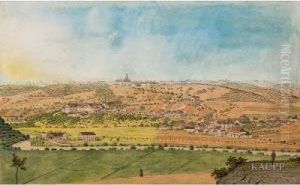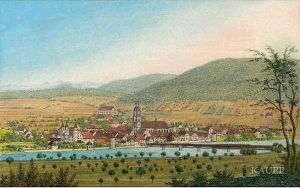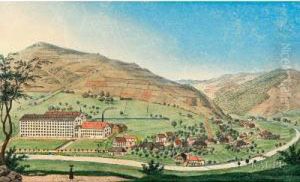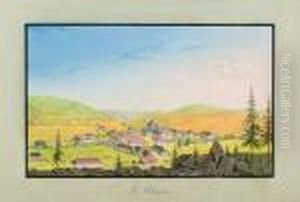Johann Martin Morat Paintings
Johann Martin Morat was a Swiss painter and draughtsman born in 1625 in Fribourg, Switzerland. While Morat does not stand among the most prominent artists in the history of art, he made contributions to the Baroque period, which was characterized by dramatic expression and direct emotional appeal.
Morat's life and work were largely influenced by the cultural and artistic developments of his time. The Baroque period saw artists exploring grandeur, tension, exuberance, and a dynamic use of space. Morat, working within this context, was part of a European art scene that was responding to the social and political changes of the 17th century, including the Counter-Reformation, which sought to attract the faithful through the emotional power of art and architecture.
Unfortunately, not much detailed information survives about Morat's life and career. It is known that he spent most of his life in his hometown of Fribourg, contributing to the local art scene. Historical records of his works include altarpieces and religious compositions, which were typical of Baroque artists who often dealt with religious subjects to inspire their audience.
Morat's style would have included the dramatic use of light and shadow, intense color, and dynamic composition—all hallmarks of the Baroque era. His works would likely have conveyed movement and emotional intensity, aiming to engage viewers not just aesthetically but also spiritually.
He passed away in 1706, leaving behind a modest but meaningful body of work that contributed to the rich tapestry of Baroque art in Switzerland. While his name may not be widely recognized today, Johann Martin Morat is a figure that represents the numerous regional artists who played a role in shaping the artistic heritage of their locales during a vibrant period in European art history.



